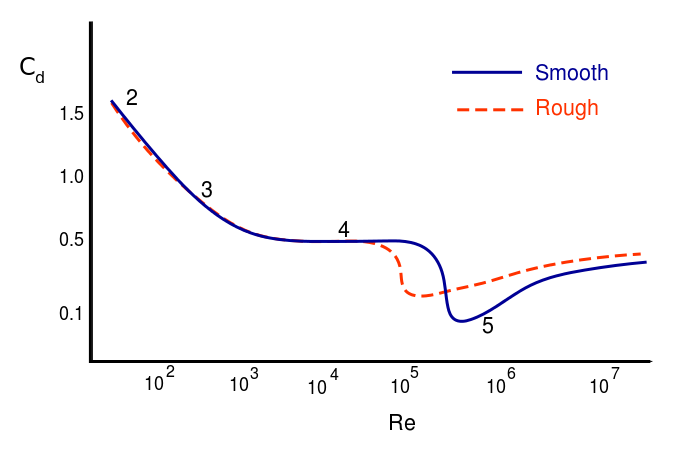The Reynolds Number
The coefficient of drag
unfortunately does not remain constant, but instead varies
with the Reynolds number.

NASA.
Drag Coefficient for a Sphere. Digital image. Nasa.gov.
NASA, 24 Aug. 2010. Web. 11 Nov. 2014.
The above is a graph relating the coefficient of drag on a
sphere with the Reynolds number, which is given by
the equationwhere D is a required linear dimension, µ is dynamic viscosity of the fluid, and L is the characteristic linear dimension, which is itself given by
where A is the cross sectional area and P is the perimeter. All together, this means that as a body moves faster and faster, the coefficient of drag goes down, but it also means that for Reynolds numbers outside of the order of E3 to E5, the value of the coefficient of drag changes rapidly as velocity changes.